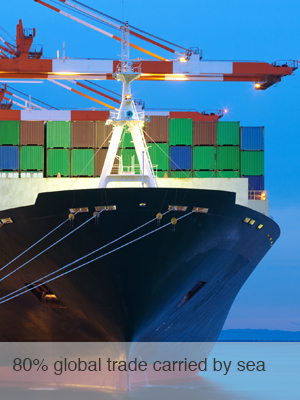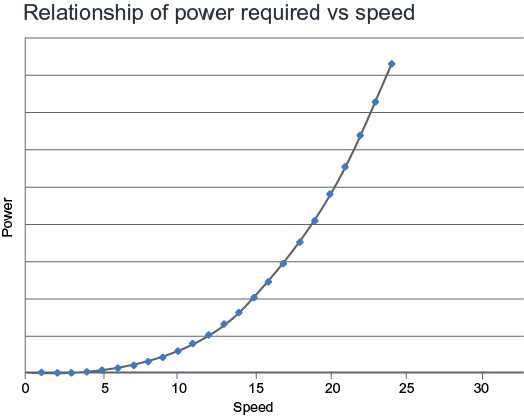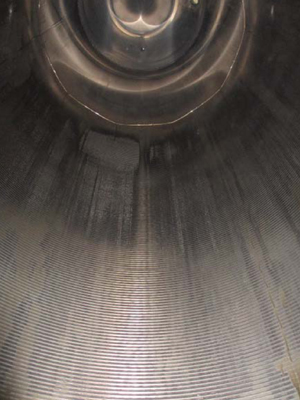Marine engines
OEMs outline challenges ahead
08 December 2025
15 April 2015
Cost saving measures can result in cold corrosion of marine cylinder liners

Increased operating costs and stringent environmental regulations, at a time of reduced demand for cargo transportation, have put extreme pressure on the shipping industry. John Smythe, Infineum Technical Advisor Marine and Large Engine Lubricants, explains some of the adverse effects cost saving measures have on engine hardware and how advanced marine cylinder oils can help to control and prevent the issues.

It is quite astonishing to think that almost 80% of global trade is carried by sea. However, in recent years the downturn in the global economy has reduced the demand for seaborne shipments and this has come at a time when operating costs are high – putting the entire value chain under extreme pressure.
Despite the recent drop in fuel prices, owners and operators are still looking to reduce their fuel bills because fuel accounts for a large proportion of their total running costs. Some of the initiatives being taken involve operational consolidation, slow steaming, and replacing smaller and older vessels with newer and more fuel efficient ones.
To survive in this tough environment ship operators have to make some pretty difficult decisions. Do they lay-up ships and wait for the market to pick up? This might sound like a reasonable plan, but mothballing is not without ongoing cost, and re-commissioning the vessel is not necessarily a fast or cheap process.
If ships are to stay on the water owners and operators need to look for ways to reduce their biggest cost factor – the fuel bill.
Many ship owners have realised that replacing these older vessels with new much more fuel efficient ships is a good option. However, at a time of high costs, low demand and smaller returns this can be a tough option to justify for some.
Where replacement is not an option, ship owners have found that rather than have fewer ships racing around the world it is better to have more ships going slower. This type of operation, known as slow steaming, is probably the easiest and quickest way to reduce fuel costs. The added advantage here is that when the economy does pick up readily available capacity is already mobilised.
Just how much fuel economy can be derived from new technology or slow steaming is hard to quantify because the actual figures depend upon a number of factors including the load, trim and weather conditions.
Engine manufacturers like MAN Diesel & Turbo and Wärtsilä are introducing new hardware technology including larger diameter propellers and ultra long stroke engines with lower than usual shaft speed. In some trials these have been shown to increase overall efficiency by up to 6% when compared to current technology.
Most large cargo vessels are propelled by slow speed, two-stroke engines, which are directly coupled to a fixed pitch propeller. In slow steaming these ships, originally designed to steam at 23-27 knots, are now sailing at 15-18 knots. That might not sound like a huge reduction but, because drag increases with the square of speed, slowing even a little results in a significant reduction in drag and big fuel savings.

Some reports suggest that reducing speed from 27 to 22 knots can theoretically result in an hourly main engine fuel saving of some 58%. However, slowing the engine means the journey takes longer – with a round the world and back trip now taking 120 rather than 90 days. While this clearly reduces the potential fuel savings, with so many variables in play it can be very hard to quantify the exact figures. But, whether the overall savings of these measures are 10 or 30% they are very hard to ignore.
Unfortunately, both the new generation of engines designed to comply with the Tier II NOx regulations and Energy Efficiency Design Index (EEDI) guidelines and older engines that are running slower than their optimum design speed can suffer from cold corrosion.
John Smythe, Technical Advisor Marine and Large Engine Lubricants Infineum International Limited
Cold corrosion is the increased corrosive wear of cast iron liners in marine engines that is a result of operational and engine design changes.

Condensed water on the surface of cylinder linersreacts with the sulphur trioxide in the combustiongases, leading to the formation of sulphuric acid,which can corrode the cylinder liners
Both in engines with longer strokes and engines that are steaming slower engine temperatures are reduced. This allows the cylinder walls to cool, which means water can condense on the surfaces of the cylinder liners. The water then reacts with the sulphur trioxide in the combustion process, which leads to the formation of sulphuric acid on the liner walls and results in the corrosion of the liner surface. If uncontrolled this leads to excessive wear of the liner material.
Whether you have an older engine slow steaming or a new super long stroke engine designed to be more fuel efficient the problem is the same – both can suffer from excessive liner wear through cold corrosion.
Cold corrosion causes the liner to wear out and once it reaches the condemning limit it has to be replaced. Although expensive, the cost of the liner and replacement is insignificant compared to the cost of taking the ship out of service - something everyone wants to avoid.
You might think the reduction in fuel sulphur to meet tightening emissions regulations would mitigate the problem. Unfortunately, there is not a straightforward relationship here.
The ocean going vessels affected by cold corrosion spend large amounts of time in international waters, where they run on the cheapest high sulphur residual fuel available. Although In Emission Control Areas they will switch to low sulphur fuels, this lower sulphur fuel might only be used for a few days of the entire journey.
Even in low sulphur fuels the amount of acid that theoretically could be produced is huge – much more than we actually see. This is because the conversion of SO3 to acid is not efficient under normal operating conditions – although the proportion converted increases under slow steaming. So, no matter which fuel is selected, some cold corrosion will still occur.
To ensure their engines are sufficiently protected many OEMs have begun to recommend oils with very high basicity, and 100BN oils are now becoming their preferred option. But in our view this is not necessarily the best approach.
John Smythe, Technical Advisor Marine and Large Engine Lubricants Infineum International Limited
High alkalinity oils are one possible solution they may not necessarily be the best solution because they do introduce much larger quantities of ash, which can potentially be damaging under certain circumstances.
Certainly, higher base numbers are good for neutralising acids but the additional ash they produce can cause scuffing and liner damage. In our view a better approach is to develop advanced cylinder oils with balanced formulations.
The two-stroke engines that are affected by cold corrosion can be bigger than a two-storey building and operate at their optimum overall efficiency at between 75-80% load. With some now running at 15% and lower load, it is not surprising that their performance is being affected. Our message to engine operators is to stay within the engine manufacturers' guidelines.
John Smythe, Technical Advisor Marine and Large Engine Lubricants Infineum International Limited
Cold corrosion can be prevented by vessel operators running their engines closer to the design point or by installing additional hardware - supplied by manufacturers - such as turbocharger cut outs, which improve operating conditions.
However, we are well aware that the sheer size of these engines means that no two behave in the same way – even on sister ships. Engine monitoring, to better understand the response to different fuels and operating conditions and then matching the lubricant to these data is increasingly important.
The drive for improved fuel economy presents a real opportunity for lubricant reformulation to ensure sufficient engine protection is delivered while supporting end users’ quest for cost savings.
Sign up to receive monthly updates via email
